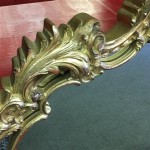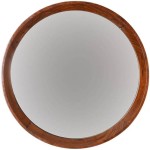Antique Mirror Silvering
Antique mirror silvering refers to the process of applying a reflective coating to the back of a piece of glass to create a mirror. This process has evolved significantly over time, with different techniques employed throughout history resulting in the distinctive appearances we associate with antique mirrors.
Historically, the earliest mirrors utilized polished metal surfaces, such as bronze or obsidian. However, the development of glassblowing technology allowed for the creation of glass mirrors. These early glass mirrors employed thin layers of metal leaf, often gold or tin, affixed to the back of the glass. While offering reflectivity, these methods were expensive and produced a less clear image compared to later techniques.
The advent of mercury silvering revolutionized mirror production in the 16th century. Developed in Venice, this process involved coating glass with an amalgam of tin and mercury. The mercury dissolved the tin, creating a reflective surface when applied to the glass. Venetian mirrors, known for their high quality and elaborate frames, became highly sought after during this period. The mercury silvering technique remained the dominant method for several centuries.
The inherent toxicity of mercury presented significant health risks to those involved in the silvering process. Mercury exposure can cause a range of neurological and physical ailments. This inherent danger led to the search for alternative silvering methods, culminating in the development of silver-based solutions.
In the mid-19th century, Justus von Liebig pioneered a process using silver nitrate to create a reflective coating. This method involved applying a solution of silver nitrate to the glass, which was then reduced to metallic silver, forming the reflective layer. This innovation eliminated the use of toxic mercury and offered superior reflectivity and durability compared to previous techniques. The silvering process could also be applied to larger sheets of glass, increasing the versatility and affordability of mirrors.
The shift to silver-based solutions marked a turning point in mirror manufacturing. This new technique facilitated mass production and contributed to the widespread availability of mirrors. Variations of this process, including improvements in the chemical solutions and application methods, are still used in modern mirror production.
Identifying the silvering method used on an antique mirror can assist in determining its age and origin. Mercury-silvered mirrors often exhibit signs of aging, such as foxing (brownish spots) and darkening of the reflective surface. The reflective layer may also appear slightly grayish compared to the brighter, more consistent silver of later mirrors. Furthermore, the edges of mercury-silvered mirrors are typically un-silvered, exposing the bare glass.
Silvered mirrors, on the other hand, tend to have a brighter, more uniform reflectivity. They are also less susceptible to foxing and darkening, though tarnishing can still occur over time. Identifying the presence of foxing, the color of the reflective surface, and the condition of the edges can provide valuable clues in determining the age and authenticity of an antique mirror.
Restoring antique mirrors requires specialized knowledge and techniques. Cleaning antique mirrors requires delicate handling and the use of appropriate cleaning solutions to avoid damaging the fragile silvering. Improper cleaning can lead to scratching of the reflective surface or further deterioration of the silvering. In cases of significant damage, re-silvering might be necessary, which involves removing the old silvering and applying a new reflective coating. This process requires expertise and specialized equipment to ensure a successful restoration.
The condition of the silvering plays a significant role in determining the value of an antique mirror. Mirrors with well-preserved original silvering are generally considered more valuable than those that have been re-silvered. The presence of foxing and other signs of aging, while potentially diminishing the reflectivity, can add to the character and value of an antique mirror, signifying its age and history.
The artistry and craftsmanship associated with antique mirrors extend beyond the silvering process itself. The frames of antique mirrors often showcase intricate carvings, elaborate gilding, and other decorative elements that reflect the stylistic trends of the period in which they were created. The frame's design, materials, and condition contribute significantly to the overall aesthetic and value of the piece.
Antique mirrors serve as more than just reflective surfaces; they are windows into the past, reflecting the evolution of technology, artistry, and decorative styles. Understanding the nuances of antique mirror silvering allows for a deeper appreciation of these historical artifacts and the craftsmanship involved in their creation. Careful preservation and restoration ensure that these pieces continue to reflect their historical significance for generations to come.

Antique Silver Wall Mirror French Vintage Decorative Arched Living Room Hallway

Silver Antique Mirrors

Silver Antique Mirrors

Antique Silver Swept Regal Mirror 220 00

Am90 8 Silver Vein Antiqued Mirror Frameless Glass Flat Polished Edge

Silvered Antique Mirrors

Leaner Mirror Empire Antique Silver 200cm X 100cm Mirrors Exclusive

Antique Silver Mirror 60 X 80cm Jysk Ca

Huge Paris Silver Chrome 100cm X 200cm Leaner Ornate Antique Mirror Free Standing

6mm Antique Mirror With Polished Edges Mycolourglass








